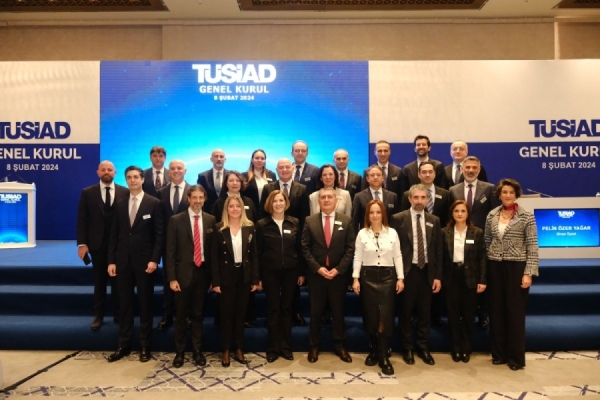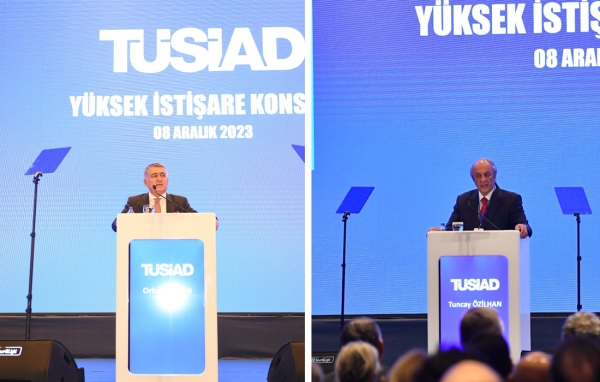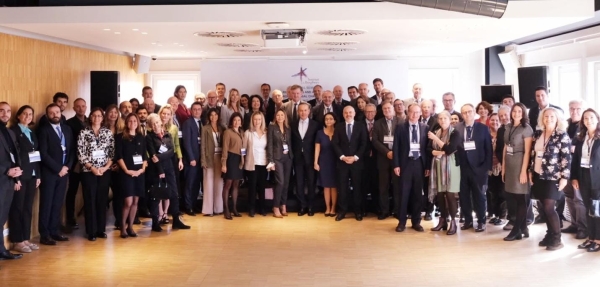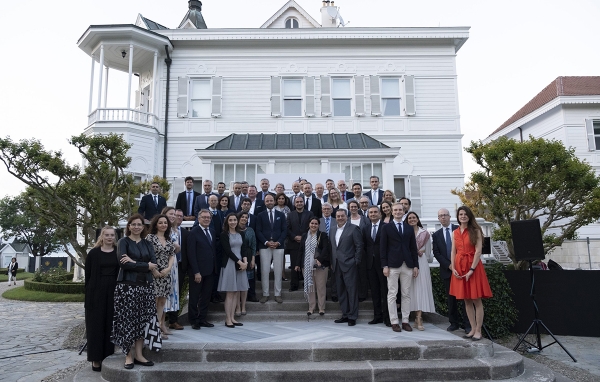Prof. Dr. Sumru ALTUĞ - Koç University-TÜSİAD Economic Research Forum Director
The issues of regional income disparities and regional development made their way into policy discussions in Turkey together with the formulation of the 5-Year Development plans by the State Planning Organization in the 1960’s. In recent years the academic and policy focus has shifted to such notions as regional convergence, the development of regional industrial clusters, and agglomeration in discussions surrounding regional income disparities.
In this policy note, we would like to begin by providing a historical perspective on these issues. In the Ottoman Empire, there was a significant role for regional economic activity. According to Murphy (1990), the Ottoman Empire constituted a “customs union” in a wide geography. Such a customs union stipulated various rules regarding trade with foreign countries. For example foreign goods were subject to a single 3% customs levy. Regardless of which ports or roads the foreign goods entered the Ottoman Empire they were subject to this levy at their first point of entry. This occasionally caused the levies to be concentrated in certain centers (Murphy, 1990.) Nevertheless there were also important regional trade routes and trading centers in this wide geography. Since our topic includes regional income disparities and regional development, we will discuss the history of economic activity in our eastern regions.
Charles Issawi, the prominent historian of the Middle East and Turkey, describes the rise and eventual fall of the Tebriz-Erzurum-Trabzon during the 1830-1900 years (Issawi, 1970.) He recounts the story of how silk, one of the most precious commodities of the era, was transported from the land-locked northern regions of Iran to the rest of the world. He explains how the region flourished due to this trade and how it declined as alternative trade routes came into being. During the period in which this trade route was most active, he shows that beginning in 1837 this trade increased to 275 trading ships with a trading volume of 120,000 tons by 1860, 517 steam ships with a trading volume of 530,000 tons in 1890 to 487 steam ships and 4,600 sailing ships transporting a trading volume of 522,000 tons and 24,000 tons, respectively, by 1900. Despite these large trading volumes, the Trabzon-Tebriz route declined in importance due to several reasons. First and perhaps foremost, the Ottoman government failed to provide infrastructure investment to repair the roads going through Erzurum or to modernize the port of Trabzon. It also failed to bring under control the corrupt activities of the paşas and bureaucratic officials who persisted in overtaxing and collecting bribes from the merchants travelling on this route. Eventually the route was bypassed by other routes as the British and the Russians invested in projects such as the railroad to Batum and the Suez Canal. According to Issawi, while the Trabzon-Tebriz route had borne 40% of the total trade from Iran during 1850-1860, by 1910 this had shrunk to 10%. Despite declining in importance over the years, the value of the trade that was conducted in the eastern Ottoman Empire was 2 million pound sterling in historical prices in the 1870’s, and 1 million pound sterling in the 1880’s.
Another center of trading activity during the Ottoman era was the city of Mosul (Shields, 1991). Shields examines the claim by economic historians of the Ottoman Empire that increasing trade ties and integration with West led to the collapse of economic activity in the region. For example Pamuk (1984) claims that the global downturn and recession of 1873-1896 led to a severe contraction and even collapse of economic activity in different areas of the Ottoman Empire. Instead Shields claims that such trading ties led to an adaptation process in the region whereby economic activities developed that could survive under the new conditions. The study by Shields carries important lessons for our age in that it shows how regional trade and regional economic activity can serve as a buffer during the process of economic integration.
The backbone of the Mosul economy resided in animal husbandry and the large flocks of sheep that were raised in the area. Mosul’s trade was conducted in a circle of 500 km. which included the cities of Baghdad, Diyarbakir, Aleppo, Damascus, Tebriz, Erzurum, Trabzon, Bitlis and Siirt (Shields, 1991).
World War I and the increasing competition among the Great Powers, especially after the discovery of oil reserves in the region, put an end to this established order. The traditional trade routes declined either because new alternative routes were put in place or because new national borders cut off regions that had been economically integrated in the past. The Russians built railroads to Batum and its northern regions which diminished the importance of the Trabzon-Erzurum-Tebriz route while the British created new trade routes by opening up the Suez Canal. The old trade routes that had passed through Mosul had encompassed an area comprising eastern and central Anatolia and had reached the Black Sea through Sivas, Tokat and Samsun as well as extending southwards to Syria, Iran and lower Iraq all the way to the Arabian Gulf. The political and economic havoc wreaked by World War I and the establishment of new political entities witnessed the rise of a new order in the region. This new order was accompanied by a destruction of the old trade routes and the old trading centers in the region.
The drive to generate new economic activity gained impetus in the 1960’s with the establishment of the State Planning Organization in the 1960’s. In Altuğ and Küçük (2006), we created colored maps to study the regional dispersion of investment and value-added in Turkey over the period 1980-2000. Our study generated some interesting findings regarding the behavior of provincial investment and value-added in manufacturing industries.
First, we identified an axis or trend line passing from the southeastern Turkey region to northwestern Turkey and, in particular, to the Marmara region based on the behavior of investment in manufacturing industries. This trend extends from regions in southeastern Turkey with low levels of investment in fixed capital to regions in northwestern Turkey where investment is the highest. Nevertheless, we observed that provinces such as Gaziantep, Kayseri, Adana, Kahramanmaraş, Amasya had achieved some increases in fixed capital investment as a result of the creation of free trade zones in their regions.
Second, we also identified a trend line passing from the southeastern Turkey region to northwestern Turkey and, in particular, to the Marmara region based on the behavior of public investment in manufacturing industries. However, compared to the investment maps for private investment in manufacturing industries, we observed that the investment maps for public investment showed a more equal distribution of investment expenditures across Turkish provinces. These maps showed that the state tended to invest in areas where private investment in fixed capital was lower.
Finally, based on the behavior of value-added in manufacturing industries, we concluded that the public investment expenditures had gone some way in mitigating regional disparities and , in particular, in contributing to growth in some of the poorest southeastern regions but the same conclusion could not be reached for the impact of private investment expenditures in manufacturing.
The issue of regional income disparities has been examined recently in the context of a number of econometric studies. Filiztekin (1998), Doğruel and Doğruel (2003), Karaca (2004) and others have shown that provincial per capita incomes have only converged in a relative but not absolute sense. This is in contrast to the implications of the neoclassical growth model which states poorer regions should grow faster than richer regions. (For a more extended discussion of this issue, see Altug and Filiztekin, 2006.) Gezici and Hewings (2004) and Yıldırım and Öcal (2006) conduct a spatial econometric analysis and identified the importance of spatial factors. (Also see Temel, Tansel and Albersen, 1999.) Falcıoğlu and Akgüngör (2006) examine the process of economic integration that began in 1980 and that gained impetus with the Customs Union Agreement with the European Union in 1996. They show that between 1980 and 2000 there has been an increase in regional specialization and in the intensity in the production of high-technology goods. In a different vein, Kırdar and Saraçoğlu (2007) incorporate the phenomenon of migration in an analysis of regional convergence. They find a negative relationship between internal migration and regional growth rates, suggesting that regional convergence is expedited by the phenomenon of migration. The reason is that those who migrate from poorer to richer regions are less skilled individuals. This suggests that regional convergence tends to occur due to a “flattening” of the skill and income profile and not due a catching-up of the poorer regions to the richer ones.
The results from these studies that have been conducted in recent years lead us to conclude that neither private nor public investment expenditures have contributed to regional convergence. Instead, this has occurred mostly to due to the perverse effects of internal migration. In our mind, these results suggest that neither regional investment incentive schemes nor regional development programs will succeed if they are conducted solely on a national basis. Instead, taking into account the historical development of economic activity in the region, we believe that there is potentially a strong role for the rejuvenation of traditional tarde routes in the region.
In recent years a new type of competition that involves energy routes has been taking place in the region. This competition includes players such as the US, the EU, Russia and China. Turkey has been trying to take part in this new market and new competition (the New “Great Game”) through its participation in the Baku-Tiflis-Ceyhan oil pipeline and other planned projects such as the Nabucco pipeline (see Öğütçü and Ma, 2007; Paillard, 2007). However, it appears that Turkey faces stiff competition in this struggle (New York Times, 21/20/2007; Referans, 26/12/2007). The historical experience as well as the nature of this new competition shows how important it is for the future of region to develop a new order and new understanding based on political and economic cooperation and social reconciliation.
References
Altuğ, S. and Filiztekin, A. (2006) “Productivity and Growth, 1923-2003”, In Altuğ, S. and Filiztekin, A. The Turkish Economy: The Real Economy, Corporate Governance, and Reform (2006. Routledge Studies in Middle Eastern Economics.
Altuğ, S. and U. N. Küçük (2006) “Türkiye’de Bölgesel Farklılıklar ve Yatırımların Seyri: Yoksul ve Zengin Bölgeler Arasındaki Fark Azalmakta mı?” B, Neyapti (der.) Ekonomik Büyümenin Dinamikleri ve İstihdam: Kaynaklar ve Etkiler
Doğruel, F. and Doğruel, S. (2003) “Türkiye’de Bölgesel Gelir Farklılıkları ve Büyüme”, Köse, A.H., Şenses, F. and Yeldan, E. (der.) İktisat Üzerine Yazılar I: Küresel Düzen, Birikim, Devlet ve Sınıflar-Korkut Boratav’a Armağan içinde, İstanbul, İletişim Yayınları
Falcıoğlu, P. and S. Akgüngör (2006) “Regional Specialization and Industrial Concentration Patterns in Turkish Manufacturing Industry after Trade Liberalization.”
Filiztekin, A. (1998) “Convergence across Regions and Provinces”, Koç University Working Paper Series No. 1998/08.
Gezici, F. and G. Hewings (2004) “Regional Convergence and the Economic Performance of Peripheral Areas in Turkey”, Review of Urban & Regional Development Studies16, pp. 113-132.
Issawi, C. (1970) “The Tabriz-Trabzon Trade, 1830–1900: Rise and Decline of a Route,” International Journal of Middle East Studies, 1, pp. 18-27.
Karaca, O. (2004) “Türkiye’de Bölgeler Arası Gelir Farklılıkları: Yakınsama Var Mı?”, Türkiye Ekonomi Kurumu Tartışma Metni Sayı 2004/07.
Kırdar. M. and S. Saraçoğlu (2007) “Migration and Regional Convergence: An Empirical Investigation for Turkey”, MPRA Paper No. 2648.
Murphy, R. (1990). “Conditions of Trade in the Eastern Mediterranean: An Appraisal of Eighteenth-Century Documents from Aleppo,” Journal of the Economic and Social History of the Orient,” 33, pp. 35-50.
New York Times (2007) Central Asia on Front Line in Energy Battle, December 12.
Öğütçü M. and X. Ma (2007) “Growing Links in Energy and Geopolitics: China and the Middle East”, Insight Turkey, 9, pp. 96-122.
Paillard, C. A. (2007) “Go East, Young European! The Black Sea in Now Yours: A French View on the Energy Strategies in the Black Sea Region”, Southeast European and Black Sea Studies, 7, pp. 237-243.
Pamuk, S. (1984) “The Ottoman Empire in the “Great Depression” of 1873-1896,” Journal of Economic History, 44, pp. 107–118.
Referans (2007) Türkiye Nabuccoda Ağırlığını Yitiriyor: Rus Lider Putin İpleri Eline Aldı, 26 Aralık.
Shields, S. (1991) “Regional Trade and 19th Century Mosul: Revising the Role of Europe in the Middle East Economy”, International Journal of Middle East Studies 23, 19-37.
Temel, T. A. Tansel and P. Albersen (1999) “Convergence and Spatial Patterns in Labor Productivity: Nonparametric Estimations for Turkey,” Journal of Regional Analysis and Policy, 29, pp. 3-19.
Yıldırım, J. and N. Öcal (2006) “Income Inequality and Economic Convergence in Turkey,” Transition Studies Review, 13, pp. 559–568.
"TÜSİAD Article Series"comprised of articles on current debates. The articles are prepared by TÜSİAD researchers. Opinions expressed belong solely to the author and do not represent the views of TÜSİAD.




